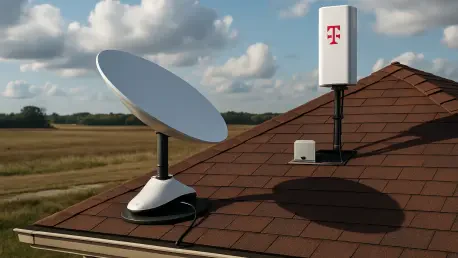I’m thrilled to sit down with Christopher Hailstone, a seasoned expert in energy management and utilities, who brings a unique perspective to the intersection of technology and connectivity. With his deep knowledge of grid reliability and infrastructure, Christopher offers invaluable insights into how innovations like satellite-based mobile services can transform communication, especially in remote or emergency situations. Today, we’re diving into T-Mobile’s groundbreaking T-Satellite service, exploring its current capabilities, the challenges of device compatibility, strategic partnerships, and its potential as a life-saving tool. Let’s get started.
How would you describe T-Mobile’s T-Satellite service and what it brings to the table for users right now?
I’m glad to shed some light on this. T-Mobile’s T-Satellite service is an exciting step forward in mobile connectivity, especially for those in areas with limited cellular coverage. Currently, it enables eligible smartphones to send text messages via satellite, which is a game-changer for staying connected in remote locations or during emergencies. It’s a foundational feature that prioritizes basic communication, ensuring users can reach out for help or stay in touch when traditional networks aren’t available.
What can you tell us about T-Mobile’s plans to expand this service beyond texting?
The company is actively working on adding data support to T-Satellite, which will broaden its functionality significantly. While texting is the focus now, data support will allow users to access specific apps and services over satellite connections. This isn’t about replacing high-speed cellular data but rather providing a critical lifeline for essential functions like mapping or messaging when no other options exist. The rollout is still in progress, but it’s clear they’re aiming to make this a more robust tool.
T-Mobile appears to be ahead of schedule with this satellite internet launch. Can you share more about how they managed to speed things up?
Indeed, T-Mobile initially targeted an October launch for satellite internet, but they’ve pushed that timeline forward, which is impressive. While the exact reasons aren’t fully public, it’s likely due to a combination of successful testing phases and strong partnerships that streamlined development. Their focus on getting the infrastructure and compatible devices ready sooner than expected shows a commitment to addressing connectivity gaps as quickly as possible, especially in critical scenarios.
Not all phones are compatible with T-Mobile’s satellite data feature. Can you explain why there’s such a varied list of supported devices?
This is a complex issue. Compatibility depends on a mix of hardware capabilities and software integration. Newer models like the Pixel 10 and iPhone 13 series have the necessary technology to support satellite data, while some recent devices, like the Galaxy S21 or Moto Razr 2024, don’t make the cut. It often comes down to specific chipsets or antenna designs that can handle satellite communication, which not all manufacturers prioritize in every model. There might also be regulatory or licensing hurdles that limit support on certain devices, though specifics are still unclear.
Speaking of partnerships, T-Mobile has teamed up with Google for satellite data on apps like Google Maps and Google Messages. How did this collaboration come about?
From what I understand, this partnership is a strategic alignment to ensure that satellite connectivity delivers practical value to users. Google’s apps are widely used for navigation and communication, making them a natural fit for optimization on T-Satellite. The collaboration likely stemmed from mutual goals to enhance user safety and accessibility, focusing on apps that people rely on during emergencies. It’s a smart move to prioritize functionality over broad app support at this early stage.
Since satellite data isn’t high-speed and is limited to specific apps, what should users expect in terms of performance?
Users need to temper expectations here. Satellite data through T-Satellite isn’t meant to compete with 4G or 5G networks; it’s much slower and designed for essential tasks. Think of it as a backup for critical situations—enough to load a map or send a message, but not for streaming or heavy browsing. Right now, apps like Google Maps and Google Messages are prioritized, along with a few others like weather apps, because they’re vital for safety and coordination when you’re off the grid.
T-Mobile positions this satellite service as more of a life-saving feature than a full data solution. Can you elaborate on the kinds of situations where it’s most valuable?
Absolutely. This service shines in emergencies where traditional networks fail—think natural disasters like hurricanes or earthquakes, or being stranded in remote areas without cell coverage. In these scenarios, the ability to send a text or access a map can mean the difference between getting help and being isolated. Texting alone is often enough to communicate urgent needs or confirm safety, which is why T-Mobile emphasizes this as a lifeline rather than a convenience feature.
Looking ahead, what’s your forecast for the future of satellite-based mobile connectivity like T-Satellite?
I’m optimistic about where this is heading. Satellite connectivity has the potential to bridge major gaps in global communication, especially as technology improves and costs come down. We’re likely to see broader device compatibility, faster data speeds, and integration with more apps over the next few years. Beyond emergencies, it could support industries like agriculture or logistics in remote areas. The challenge will be balancing accessibility with affordability, but if companies like T-Mobile keep pushing boundaries, I believe we’re on the cusp of a connectivity revolution that could truly reach everyone, everywhere.









